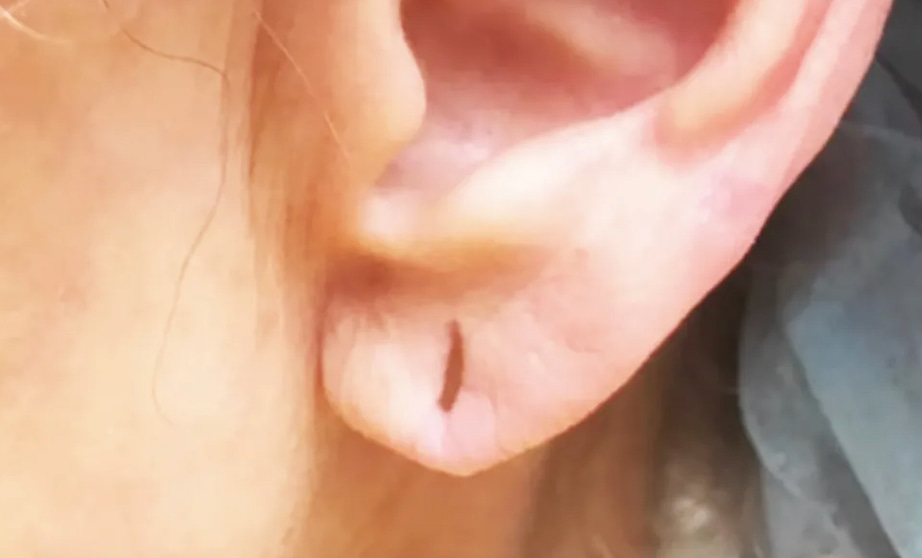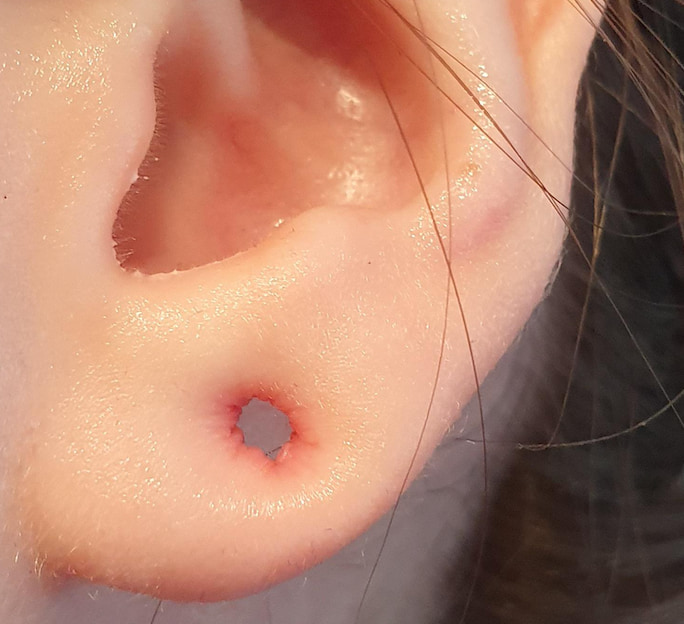Dealing with a stretched ear piercing can be both uncomfortable and cosmetically frustrating. If you've noticed your earring holes elongating over time, or have experienced an accidental tear, rest assured, there are several effective methods to mend the damage.
This comprehensive guide explores the practical solutions on how to fix stretched ear piercing. We'll also discuss the best methods for caring for your ears post-surgery and offer advice on how to prevent your earring holes from stretching again.

Understanding the causes of stretched earring holes is the first step in preventing and addressing the issue. Here are some of the most common reasons why earring holes stretch:

If you find yourself with a stretched earring hole, there are a few effective treatment options to consider. The choice of remedy largely depends on the extent of the stretching. Here's how to fix earring holes that stretched:
For minor stretching that you've noticed rather promptly, assisted natural healing can be effective. This method involves taking a break from wearing earrings to allow the earlobe to naturally contract and heal slightly on its own. If your stretching is minimal, here's how to fix stretched earlobes at home:
If the stretching is not severe enough to require surgery, dermal fillers offer a non-invasive solution to fix stretched earlobes. These fillers, which must be injected by a medical professional, can plump up the earlobe and reduce the appearance of the hole. This method provides a cosmetic fix that can make the earlobes look more intact and can support earrings better. It's important to note that fillers are temporary and typically last between 6 to 12 months before needing reapplication.

For significant stretching or completely torn earlobes, surgical repair is the only solution to restore it. Here's how to repair stretched earring holes with surgical procedure:
1.Consultation and Planning: The first step involves a consultation with a plastic surgeon or dermatologist who specializes in cosmetic repairs. During this session, the doctor will assess the extent of the damage and discuss your expectations.
2.Procedure: The surgical repair, commonly referred to as lobuloplasty, is typically performed under local anesthesia. The surgeon will start by excising the stretched or split part of the earlobe to create a clean edge. Using fine sutures, they will then meticulously stitch the edges back together in a way that minimizes scarring and restores the natural shape of the earlobe.
3.Recovery: Post-surgery, patients are usually sent home the same day. The recovery period generally lasts a few weeks, during which patients may experience mild discomfort, swelling, and bruising.

Post-surgery care is crucial for successful healing and preventing future issues. Follow these guidelines to care for your ears after undergoing surgical repair:
Re-piercing your ear after surgery is certainly possible. However, timing and precaution are crucial to ensure that the new piercing is successful and does not compromise the integrity of the healed lobe.
Typically, it's recommended to wait at least six months before considering re-piercing. This time allows the tissue to heal fully and the scar tissue to stabilize, providing a strong foundation for a new piercing.
Before getting re-pierced, consult with the surgeon who performed the earlobe repair. They can assess whether your ears have healed enough and advise on the safest location for the new piercing. It's generally advised to avoid piercing through the scar tissue itself as it is less elastic and more prone to tearing than normal skin.
Now that you know how to fix a stretched earring hole, preventing the stretching is key to maintaining the integrity of your earlobes and avoiding the need for corrective procedures again. Here are several effective strategies:

Dealing with stretched earring holes can be frustrating, but with the right approach, it's a manageable issue. From inserting dermal fillers to exploring the surgical options on how to fix stretched ear piercing, we've covered essential strategies to help you repair a stretched ear piercing. Remember, it's crucial to consult with a professional before opting for surgery, and always follow post-surgical care instructions to ensure optimal healing. By taking the preventative measures outlined, you can enjoy wearing your favorite earrings without stretching your piercings again.
Stretched earring holes can sometimes close naturally if the stretching is minor and if the earlobes are given time to heal without further stress. However, significant stretching or tearing usually requires surgical intervention to fully close and repair the hole.
Stretched earlobes can often be restored to their normal appearance with surgical repair. The procedure involves removing the stretched tissue and suturing the earlobe back together. After healing, the earlobe typically looks much like it did before the stretching occurred.
The cost of surgical repair for stretched earlobes varies depending on the severity of the stretching, the surgeon's experience, and your location. On average, the procedure can range from $300 to $1,000 per ear. It's best to consult with a qualified surgeon to get an accurate estimate based on your specific situation.
Discover how to buy diamond earrings with our expert guide. Learn about the 4 Cs, setting styles, best places to shop, and more to make an informed choice.
Read MoreLearn how to make pearl earrings with our DIY guide. Discover the tools needed and follow step-by-step instructions to create beautiful pearl jewelry at home.
Read MoreDiscover how to clean pearls safely and effectively with our guide. Learn the best methods and tips to maintain your pearls' natural luster and beauty.
Read MoreLearn how to buy pearls with our expert guide. Understand different types of pearls and discover the crucial factors to consider before making your purchase.
Read More